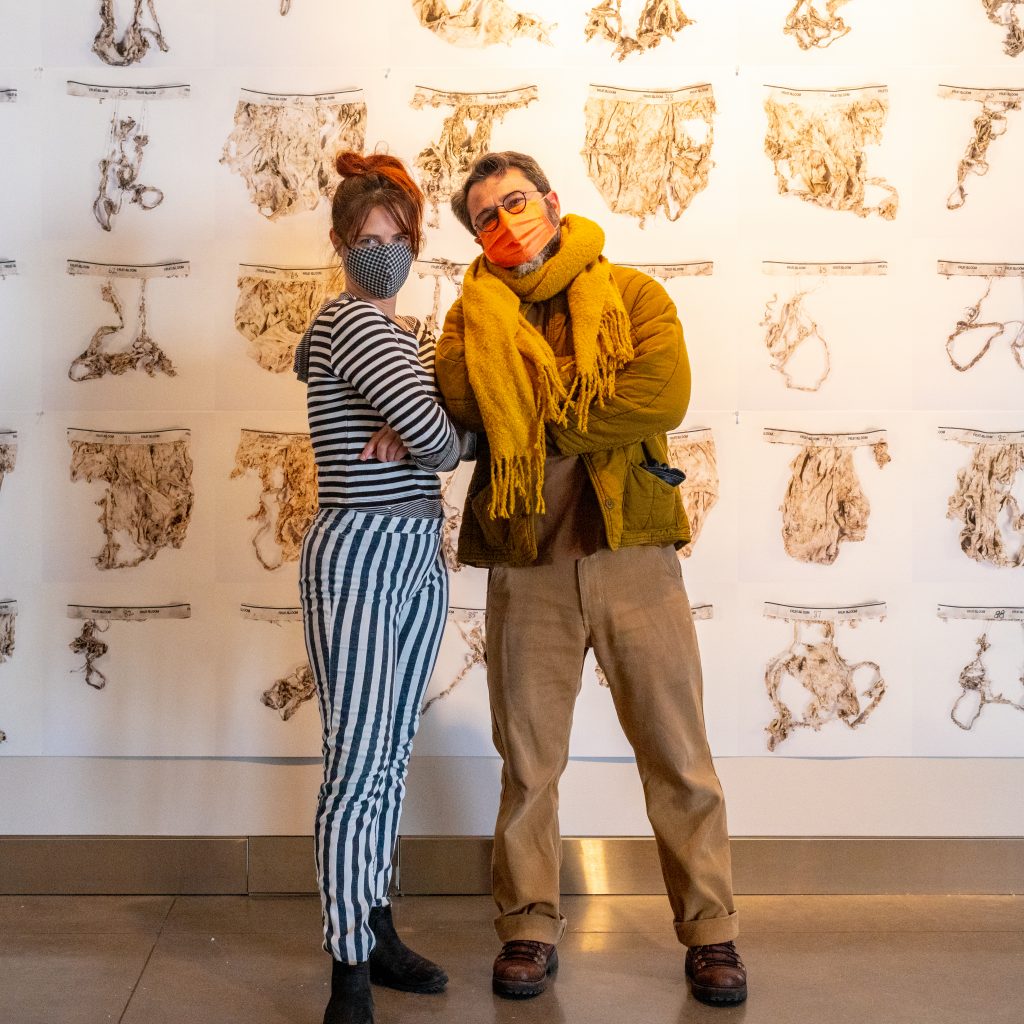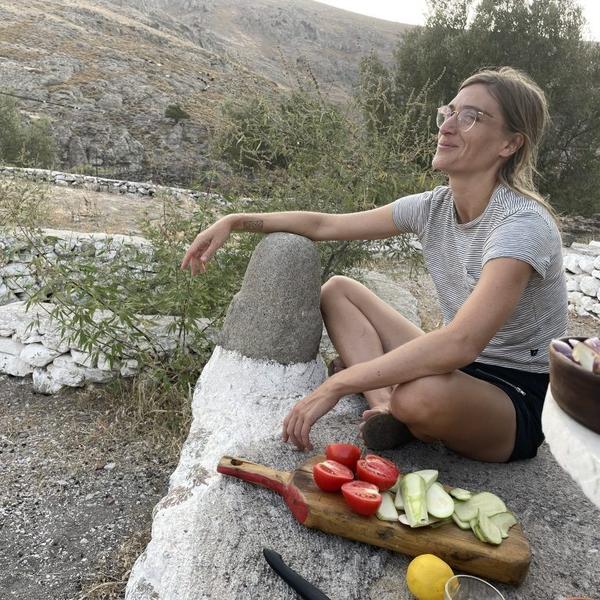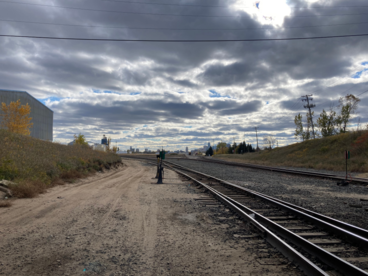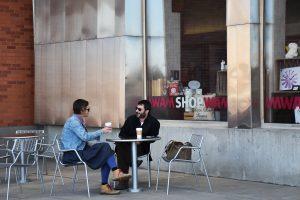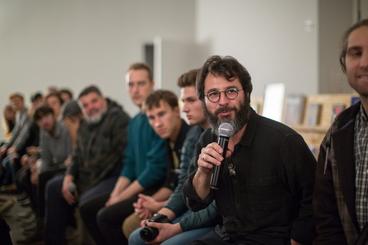“This interview has been edited for length and clarity”: It’s a throwaway phrase, a quick way of indicating that a printed conversation has been pruned of the false starts, fillers, tangents, and rabbit holes that might have unfolded in the three-dimensional dialogue on which it’s based. The process of smoothing and shortening interviews is necessary for publication word counts and the limits of readers’ time, and yet, in the context of my friend Gudrun Lock’s The Nature of Shoreham Yards, this process gives me pause. The show, which just finished a four-month run at the Weisman Art Museum, documented a longer-running project dedicated to layered and open-ended research on the land surrounding a Canadian Pacific truck and train site in Northeast Minneapolis. Polluted, lively, and sticky with the residue of colonial histories that imagined trains as the infrastructural arm of unfettered expansion, Shoreham Yards exemplifies the everyday tensions of getting by in the ongoing aftermath of that expansionism. Gudrun walks her dog around the site and, three years ago, began to imagine how it might become a collaborative laboratory where people could research strategies for ecological revitalization and practice tactics for knowing nature without dominating it. Despite the fact that the project has recently reached a serious milestone — Canadian Pacific has expressed interest in cooperating with this work moving forward — when I sat down for an interview with Gudrun and Weisman curator Boris Oicherman, both reiterated repeatedly that collaboration and open-ended dialogue is still the ultimate goal. So, we talked. We talked about the evolution of the project and the surprises of collaboration, returning again and again to the importance of honoring uncertainty. And when I sat down to edit the two-hour conversation into something cleaner and more certain, it felt wrong. If this editing was necessary, it also feels necessary to mark the behind-the-scenes work that creates the illusion that there’s a direct line to insight. This interview has been edited for clarity and length. It should not be confused for the real-life conversation it’s based on, which was more fumbling, uncertain, and alive.
Miranda
Gudrun, a lot of this project is just walking around Shoreham Yards and paying attention to what’s happening there. Can you talk about what the site is like? Give us a short tour.
Gudrun
Well, there are four sides to the trainyard, and each side has a different relationship with the neighborhood around it. I usually start at the train park, where there’s a playground and you’re on a residential street. From the train park, you walk towards a more industrial zone. You loop around—and it takes quite some time, looping around these train systems. Suddenly it feels like people aren't really supposed to be here. There’s wind blowing dust and sand and the diesel smoke from, not only Canadian Pacific, but also Burlington Northern, with their hundreds of oil train cars that come through every day. The train cars really expose you to the vastness of these networks and the smallness of yourself, in relation to them.
From there, you dip into some trees and it starts to feel a little cozy for a split second. And maybe you see a groundhog, like I did the other day, or the chew marks of what someone thinks might be a porcupine. And maybe you see a monarch and a killdeer and a wild turkey and deer footprints and also remnants of someone's encampment. So, there's garbage and a broken tent.
Further along, you get to the golf course, and you see the leisure activities of the people in the neighborhood. There's the dog park, and people are jogging and moving along St Anthony Parkway in between.
And then you come to the dump. And if you don't know it's a dump and you don't understand the history of it, it could be quite beautiful. There’s grassland and wildflowers and some forest. But when you come up against the fence to the trainyard, it can be very noisy and stinky, and there're lots of trucks and containers being moved around. Depending on which direction the wind is blowing, it can be pretty nasty. You feel the vulnerability of whatever birds you're watching. If it's winter, you can see across the whole thing.
Finally, you turn the corner again, and you are along Central Avenue. You feel a little more vulnerable again, because the cars are moving super quickly, and the strip of buffer is thinner. There's a section where pollution mitigation is actively happening. It feels exposed and stark.
Your body and your senses record all these things. The weather matters. You walk around and take it in.
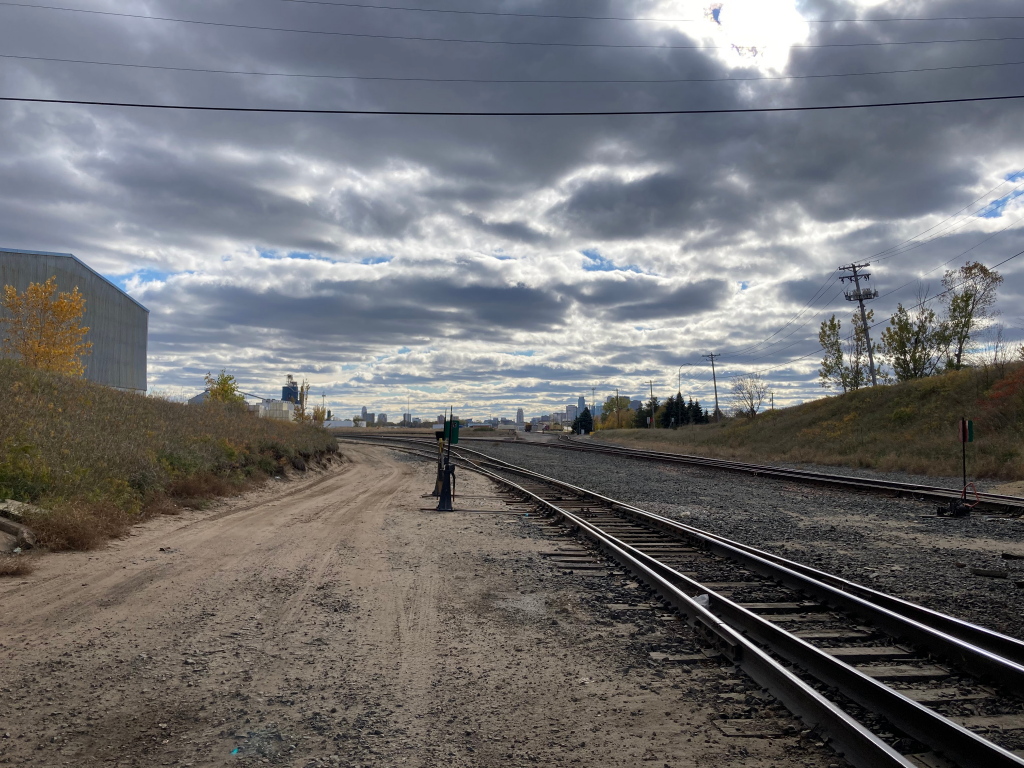
Miranda
You describe this land around Shoreham as the margins, a place where you can see the limits of progress. Say more about what you mean by these terms. What does it mean to be at the limits of progress? What's the value of paying attention to marginal spaces?
Gudrun
When I talk about being at the limits of progress, I am thinking of the capital-P, colonial idea of Progress. That idea imagines that humans push forward in a straight line through history instead of moving in an entangled web, full of complex time scales and relationships with larger living systems. That version of progress asks the planet to give and give to humans, with no reciprocal relationship, and comes up with “solutions” to environmental problems that just allow us to keep doing what we're doing, which is to consume as much as we want and use land as a repository for the garbage. So, that's what I mean, in a nutshell.
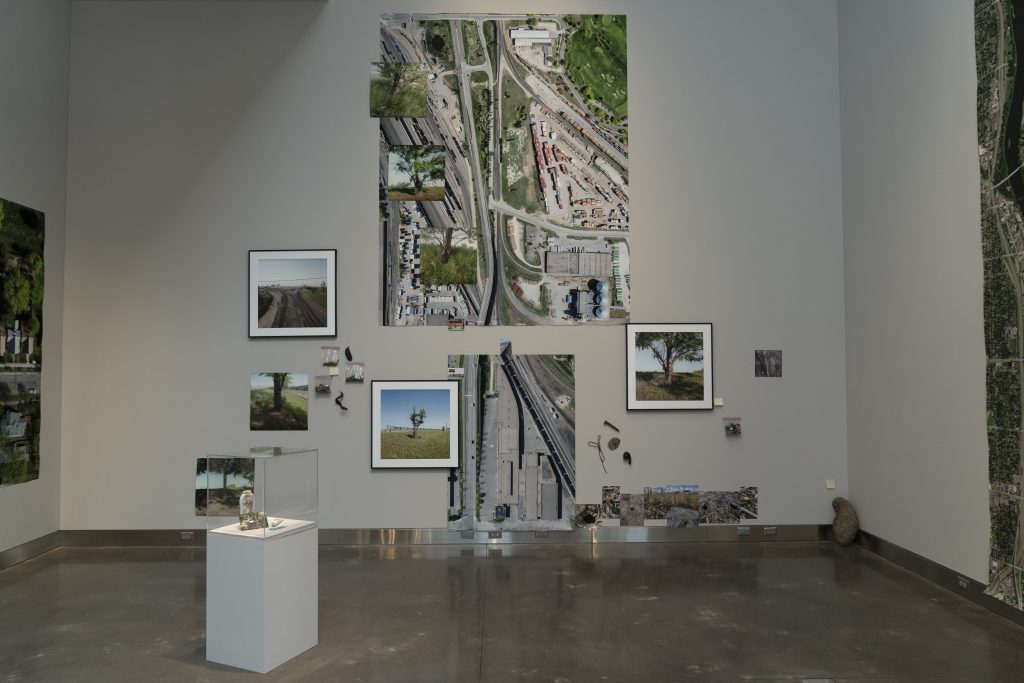
Boris
What progress should mean now is openness to different ideas of progress. Gudrun just held a panel at MCAD on revitalization, and somebody there brought up the example of European colonizers landing on the shore of North America. They saw what they thought was beautiful wild land, not understanding that it was actually very carefully cultivated. They couldn’t see it because they were approaching land in a completely different way. The colonial conquest mindset is, "Oh, this is wild. Let's take it," when it could be, "What the fuck is going on here? Why is this place so different from what we expect? Let’s ask the people who are already here what is happening." Maybe a new idea of progress can look like this: constantly seeking out "What the fuck" moments that lead to more and more conversations.
Or, we can talk about another kind of progress in Gudrun’s work. Gudrun started the project with a very abstract idea, and then three years passed, and, suddenly, there is a narrative and a logic that you would not have been able to predict at the beginning. It’s not progress as, "Here's a five-year plan, projects, objectives and deliverables." It’s progress as an emergent process where you learn from your experiences and very carefully use them to make predictions, but in a way that doesn't limit how you're going to work in the future.
Miranda
You’ve been working on this project for a long time, Gudrun. Three years! How has the project evolved? What are the questions that are sticking with you now, versus in the beginning? And Boris, for you too — what did you think this project was in the beginning, and what are you understanding it to be now?
Boris
Well, again, Gudrun’s initial vision was very abstract. She reached out to me about the Creative Collaboration fellowship and just said, "There's this interesting thing going on, and I have this very initial idea. I have no idea how to go about it. I just want to do it." So, it was less about how I understood the project and more about trusting Gudrun and trusting her process and seeing what happened. My work is basically a lot of trust and then watching what emerges.
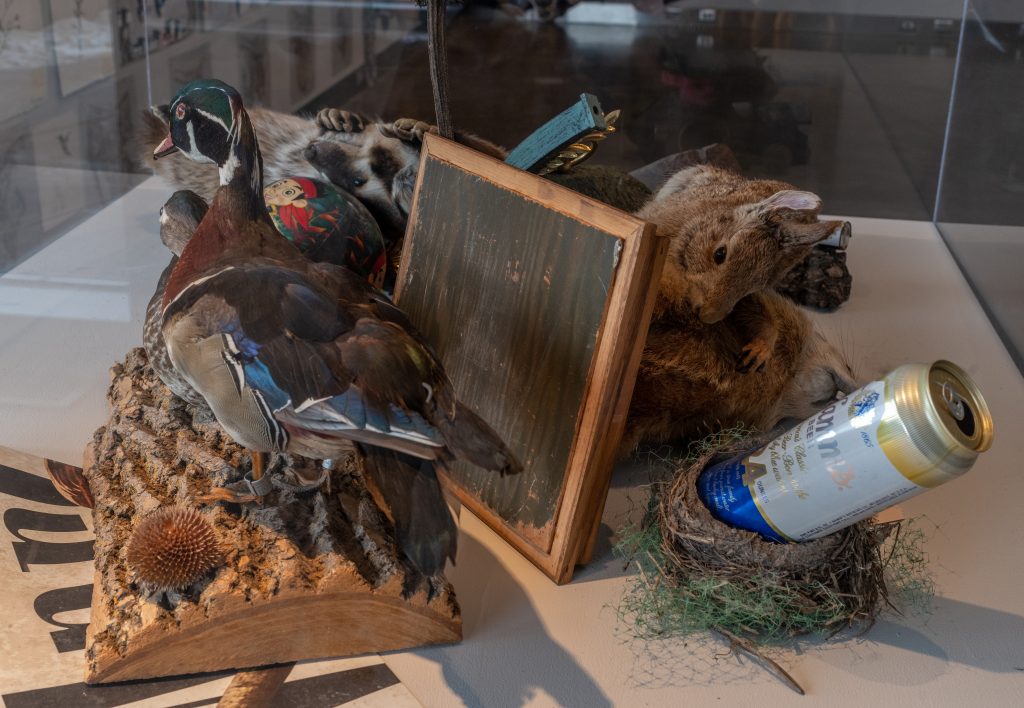
Gudrun
I'm so used to these systems that require accounting, showing proof of who I am and plans for next steps. My interview for the fellowship was one coffee, no resume, no application. Boris, maybe you had looked at my website briefly. You asked me, "So, you used to make some sculpture. What does that have to do with what you're talking about now?" And I said something about the margins and the unseen and refuse, and you said, "Okay. Well, there's an opening in the fellowship and you can start on Monday." I actually had to speak with other people who have worked with you to ask, "Okay, what's going on here? Do I need to be telling Boris more about the ins and outs of the project?" And these people were like, "No, you don't understand. You just do the work and Boris will support you." It was actually confounding at first, because this is not how arts funding works usually, or ever.
When Boris said yes, that allowed me to keep thinking and dreaming and meeting people. And then three other people said yes, all researchers at the University of Minnesota. Two of them are scientists. I brought them to the site, and my first questions were simply "Am I being ridiculous? Are there interesting research questions here?" And all three of them said, basically, "Maybe." And "Maybe" was enough for me. I mean, they said it with smiles on their faces.
And now, because of talking to so many people, because I've spent time looking at the place and walking it and developing an understanding of its patterns, as far as the animal and plant life, and because Canadian Pacific is taking me more seriously, I've developed new questions. One is "What is revitalization?" The word “revitalization” might be the wrong word, because to a lot of people it suggests gentrification. I think about it in terms of experiments to support what’s already thriving on the land, and working with doubt and uncertainty instead of suppressing it. My understanding of what revitalization can be still needs to be developed.
Another important question for me right now has to do with how to do research without being abusive and invasive, and without objectifying the land or the species or the soil. So often, research draws on the logic of capital-P Progress. I’m interested in other ways of doing it.
Miranda
Gudrun, I’ve heard you use the phrase "collection zone" to talk about the land around Shoreham. What does that language do for you? What does it do to call the land around Shoreham a collection zone?
Gudrun
Well, that phrase does something like what I tried to do in the show this spring, which is to create a collage of the histories of materials and processes that formed the land. This might involve natural processes, such as the 30,000 year-old sand shelf left there by glaciers, or the human processes of creating a train and trucking yard. You have this accumulation and juxtaposition of all the things that have ended up there, whether by their own agency or not. It's like a bus depot. Or maybe it’s like a kitchen floor. The center of the kitchen floor is vaguely clean because you keep walking on it, keep using that path. The corners collect the bits and pieces that are remnants of your day and your life and the world, the dust bunnies and the dog hair and the bread crumbs. They speak of the history of our everyday lives.
Miranda
It feels more active, too. If you call a place like Shoreham one of these other terms we have for polluted spaces — a wasteland or a sacrifice zone or whatever — it makes the land and the living things there put-upon and passive and dead. The idea of a collection zone seems to emphasize the activeness there.
Gudrun
Actually, that's a good point because this is also what I watch a lot of the animals doing. They're collecting things and burying things and making things. And so, this act of paying attention really does open your eyes to what's going on. I've never paid all that much attention to birds before, and suddenly I'm really noticing all their activity.
Miranda
In general, it seems like you are trying to pay attention to the intentionality and sentience of not just people, but all the other bodies in that buffer zone. In the artist talk you gave for the show, you spoke multiple times about the land by the dump wanting to be a wetland. Or, I’ve heard you talking about the badger up on the hill, about what the badger wants.
Gudrun
That's part of what makes it interesting for me. Sometimes when I'm trying to imagine these possibilities, I get stuck thinking that there's nothing much going on here. But then I see a nuthatch jumping around, squawking at his girlfriend, and I'm so happy to think that maybe I can add a couple of fruit trees or whatever it is that he eats and help support his family. Or, I think of what's growing in the ground, imagining the underworld bacterial life and thinking about helping make that more rich. It's just so much more interesting than humans going about their everyday business. Boris, what do you think?
Boris
Well, when you say what the land wants, you're projecting, right? It's a human concept. And in this, there's an acknowledgement of not being neutral. It's an acknowledgement that we as humans created this construct, and not losing track of this idea is important. Whatever conceptions we create about the place and people and microbes that live there and animals and land itself, there's nothing natural about it. It's part of our culture, and we should own it.
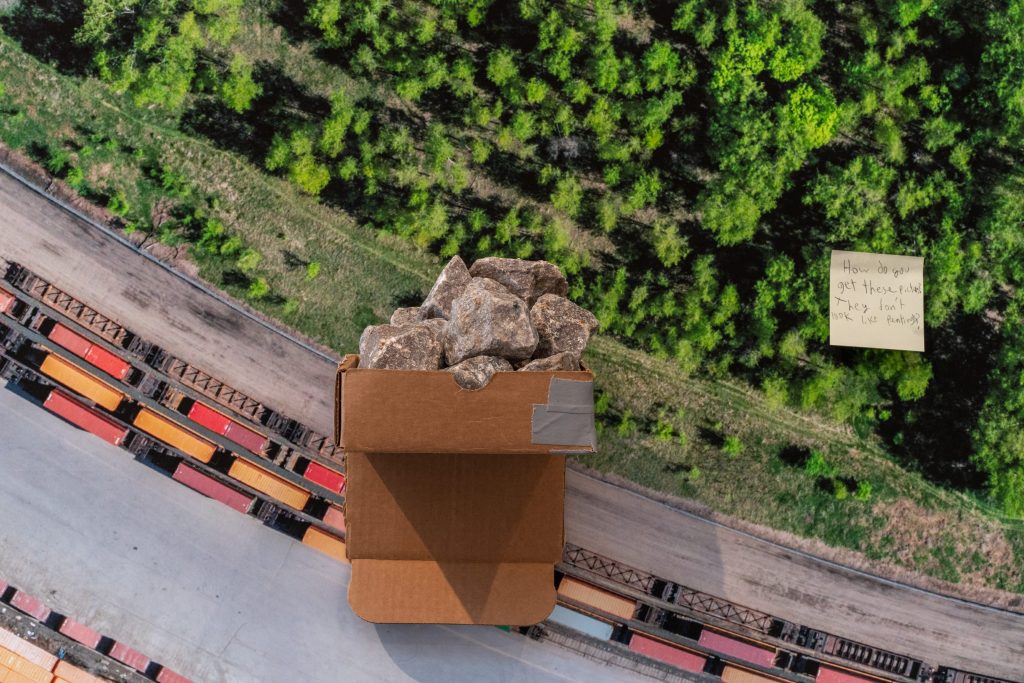
Miranda
I think it’s helpful to talk about what the land wants. Maybe it’s metaphoric, but if you have to think about non-human bodies having their own tendencies and momentum, you have to think about the limits of people’s control over a place. The idea that humans can control everything is connected to so many problems, environmental and otherwise.
Boris
Absolutely. This is why you create this concept, right? To recalibrate.
Gudrun
What we're coming up against now is that there isn't a perfect word for it. We either turn the land into this desiring being by saying, "It wants" — which definitely works for my narrative and my feelings about it, really — or we understand it mechanistically. Another question that’s emerged for me has to do with the language we use to translate these concepts, whether in dominant culture or between different fields and community interests. How do we choose what words we're going to use? If it's not “revitalization,” if it's not what the land wants, what are the words and ideas we should be spreading?
Boris
I want to comment on what you said, Gudrun, about your personal feelings about the land. There's an assumption that artists do things because of values and ideals, to help the planet and so on. But we also do things that give us joy. Being there and feeling joy from watching animals do what they do, or feeling joy because you tell your story to someone and they smile, you get this feedback loop of encouragement, and as an artist, this is what you're guided by. Our ideals are in everything we work for, but in the end, that is not the only reason we develop projects.
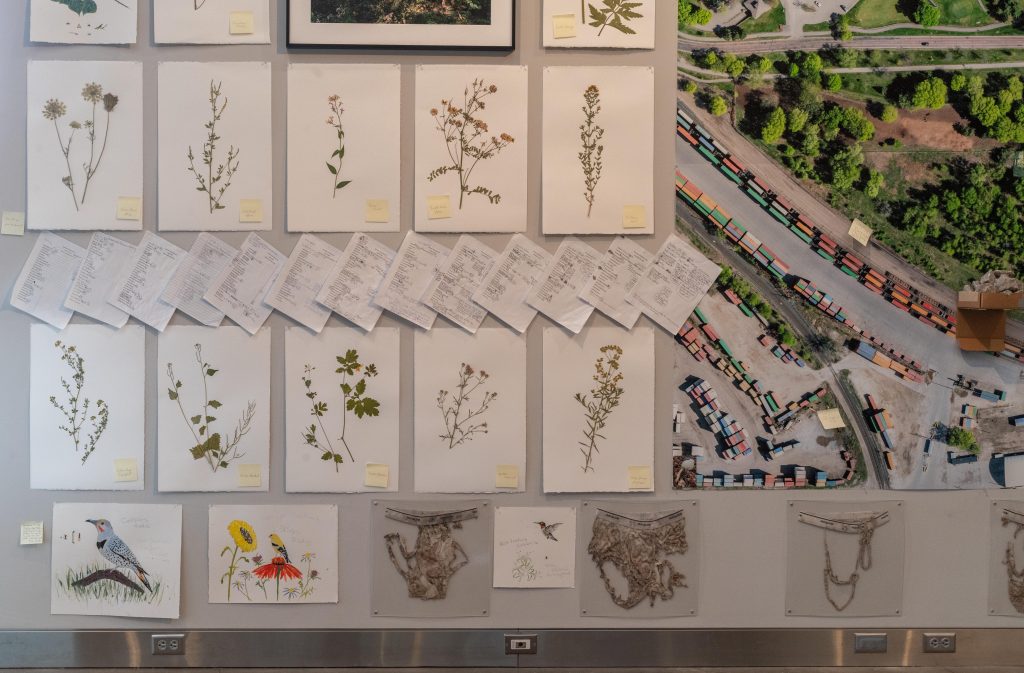
Gudrun
That's right. And it brings to mind two things about the question of revitalization. What seems clear is that it's also about revitalizing me, about making me feel more vital and connected and reanimating my imagination in relation to place. Because, before I started this project, I was feeling stuck in really limited conversations. I wanted to create more of these reanimating types of connections.
And as Boris was saying, a lot of that has to do with storytelling. When I tell a story that makes someone smile, or someone tells me a story that makes me smile, it's happening not because it's a consumable story in the way that some Instagram post might be, but because it's a story that, in the words of Vanessa Andreotti, moves and fills up space in us. We take the story and digest it and process it, and it becomes theirs. It's almost an infectious process.
Miranda
I think that points to issues around research and objectivity. If you're moving through Shoreham saying, "I'm here asking questions, not just to help the planet or objectively determine the correct way to do revitalization in a polluted place, but because I am drawn here and I have stake here," that's a different way of doing research or thinking about your position in it.
Gudrun
I started reading a book called Pollution Is Colonialism, by Max Liboiron, that brings all these things together. I am looking to it for help in doing research without objectifying the land. I don’t really know how to talk about it yet. So far, what I am getting out of it is the importance of lived experiences and working through the senses and within communities, slowly over time. It is a lived process.
Miranda
Your own research process has evolved a lot as you’ve brought in new collaborators and as those collaborators have begun to form connections with one another. It seems very organic. Can you talk more about the process?
Gudrun
Well, one thing that’s interesting is that the people who are professional researchers in their fields, they're contaminated by those of us who are not professionalized. We ask them our unprofessional questions, and we all become amateurs and play with our less-than-professional interests and watch connections form, without knowing where they're going to go. This is exactly counter to capital-P Progress. There's a love and a joy and an excitement in the unknown, rather than a security in the known that can be so tedious and dull and wrong and predictable and numbing.
But here's where we have to make the point that I can only take these risks because of support. I can only be excited in the doubts and the uncertainty because I am supported. And so, that's where the museum and Boris' program really elevates artists’ ability to take risks and enjoy ourselves, without being torn up with anxiety about showing your work or proving yourself or being certain of outcomes.
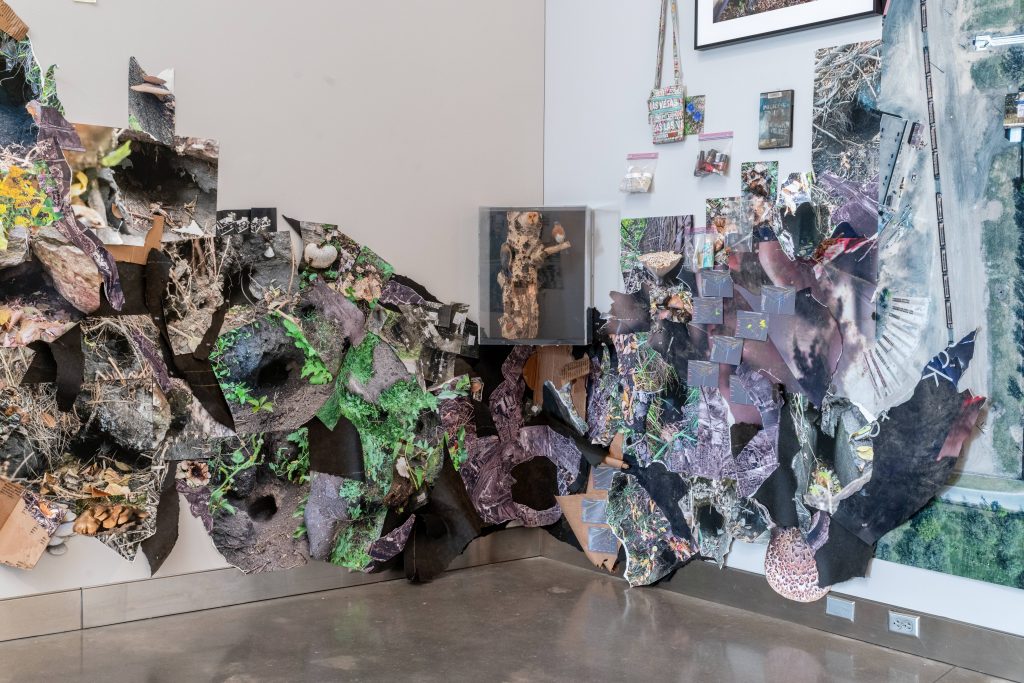
Miranda
Boris, can you tell us more about what your work entails? Your job title is unusual: Curator of Creative Collaboration.
Boris
I want to start by saying that Gudrun is absolutely right — she is supported by whatever funding the Weisman has been able to give. But that support isn’t anywhere near adequate. It's what we can squeeze out of the institution’s current shape. Gudrun has to be supported on the non-institutional side, by jobs and family, or this project wouldn’t happen. It is a privileged position and, as curator, as much as I want to support artists who are less privileged, I currently don't have the practical means to do this.
And so, in the very big picture, my work is about trying to build a system where we depend less on people's privilege for that support. Some strategies are obvious, like pursuing grants and donors. But there is also this huge university machine — more than 50,000 students, thousands of faculty and staff, many with enormous research budgets that the arts have no access to. A single grant at the medical school can be bigger than the yearly budget of our museum. How do you make those resources accessible to artists, to even a small extent? One way is by facilitating collaborations. And so, I try to build a culture where these things can happen, talking to people in the university and explaining how important art is, making introductions, setting up coffees and helping everybody explore what's possible.
Miranda
You’ve both been referencing the panels on revitalization you just held. How did they go and what were your takeaways? I know you have been talking to Canadian Pacific Railway about the possibility of doing restoration or revitalization work on the land around Shoreham, so the question is becoming a practical one.
Gudrun
What seemed to matter to everybody on these panels is that things are context-specific; you really have to know and pay attention to the place. So, revitalization has to be a context-specific approach that considers all elements — the truckers as well as the birds, as well as the wind blowing the sand across the landscape, and how that's different on each side of the yard, in every corner, or every few feet of each strip in every corner. The challenge is to know the land in those terms and develop revitalization experiments that acknowledge those complexities.
When we turn this into a proposal for Canadian Pacific, these words — experimental revitalization — function in contrast to a business-as-usual model, where you just plant some trees and walk away. I can point to this area on the site where, over and over again, the trees die. Because they're the wrong trees, and no one is paying attention to the soil. Even if the trees do grow, they're eventually going to get chopped down because they're planted under power lines — all ways in which the standard approach is garbage and wastes Canadian Pacific’s money and time.
There are multiple versions of revitalization in play here. For Canadian Pacific, it's going to mean one thing. For me and the project collaborators, it might mean many other things. For me, it really is about re-animating my imagination and re-animating the site itself as a place of possibility rather than as a dead zone. Maybe the first step in revitalization is to see the potential and the beauty in what otherwise might look like nothing. But it's not fantasy. That’s important. We're not talking about daydreams. We're talking about a material place, with material histories and very, very real material realities.
